On May 10, the exhibition Mika Ninagawa: Self-image came to a close. As a miliestone event marking her twentieth year as an artist, the show featured only works that Ninagawa truly wanted to show. What resulted were photographs from the noir and PLANT A TREE series devoid of her vibrant “Ninagawa Color,” images (i.e, “self-images”) described by the artist as “close to her unvarnished self.” Together, they presented a face of Ninagawa never before seen. How this was done stemmed from the installation of the works, which merits special attention.
Till now, Ninagawa’s photographs have been compatible with and shown with greatest effect within the so-called “White Cube,” i.e, a space with flat white walls and uniform illumination. In contrast, the spatial elements of the Hara Museum were described by Ninagawa as being “too strong” (if I heard her correctly) during the planning stage. Despite her long experience with exhibitions, Ninagawa found showing work within the Hara Museum’s distinctive spaces to be a less than a straight-forward task. In the case of Gallery I, the most troublesome in this sense, turning it into a screening room entailed building a new wall to hide the room’s most obvious features and installation of a flat screen. The other galleries were not simple either. Arcing walls, rough surfaces with thick layered paint, the amber sheen of the original wooden floors, even the beautiful view of the garden from the sunroom were elements that threatened to distract viewers from the exhibition. Ninagawa stewed over this issue for about a year before arriving at a plan, which became the final show.
In the first floor hallway and Gallery II, myriad images were printed on huge sheets that were mounted on the walls, and additional framed images were hung on top. This presented more than 100 images for the viewer to look at. The overflowing images resisted efforts to remember or place them. This consumption of images at breakneck speed seemed to echo modern society and the high-speed consumption that occurs there.
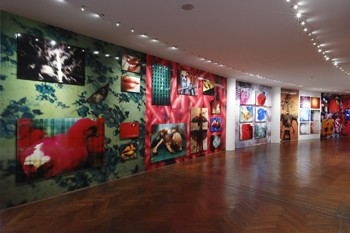
The galleries on the second floor were once bedrooms in the former Hara family residence. Ninagawa covered the large vertical window in the staircase leading to this private space with a transparent film imprinted with a black-and-white images. This allowed the gentle spring sunlight and wind-blown foliage to filter through the window as visitors mounted the stairs, their mindset quietly changing from the public space on the first floor to the private space on the second.
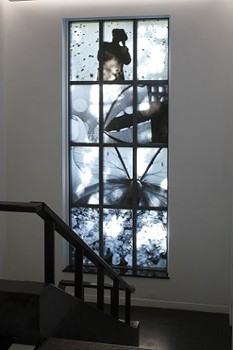
On the second floor, the walls were lined with Ninagawa’s self-portraits. In her photos from the PLANT A TREE series in Gallery IV, the artist was nowhere to be found. And yet, the artist says, these were still self-portraits, in the sense that each image expresses the heart of the artist at the instant the shutter was released. Though stricken with grief by a personal incident, her obsession with the falling cherry blossoms resulted in images that were either out of focus or blurred. Viewing the color of the cherry blossoms quietly emerging from the dark gray of the walls, some visitors no doubt found themselves drawing close to the heart of the artist.
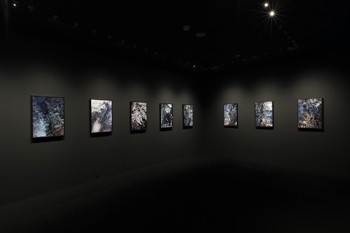
In the hallway, a checkered pattern was laid down on the floor specially for the exhibition. This pattern referenced the marble checkerboard pattern of the original floor and symbolized the “light and shadow” in Ninagawa’s work. Stepping into Gallery V, the viewer entered a room packed with monochrome self-portraits of the artitst, which she took while alone at a hotel or in her own room in between shoots of the movie Helter Skelter. As a director, Ninagawa worked with a crew of people. These self-portraits were an affirmation of what she was capable of doing alone and with a single camera.
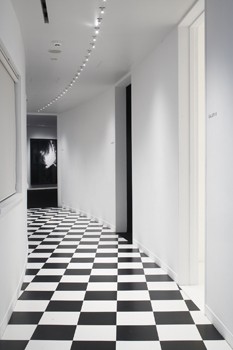
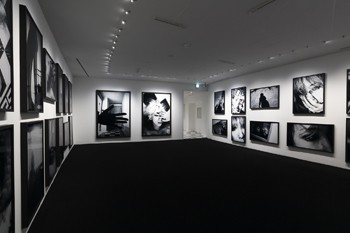
This exhibition was remarkable for the excellence of its installation and its exhibition catalogue. As a publication of the Hara Museum, the catalogue’s relative lack of gallery views was unusual. But thanks to extremely detailed editing, the catalogue brings the actual installation back to life with each turn of a page. Satoru Machiguchi, a graphic designer who has worked on many other books by photographers, imbued the catalogue with his unique touch. For those who missed the Self-image show, this catalogue provides a way for them to still experience it.
(Masami Tsubouchi, associate curator)
Photo by Keizo Kioku
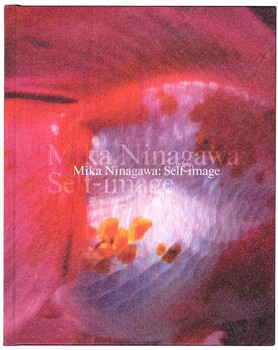
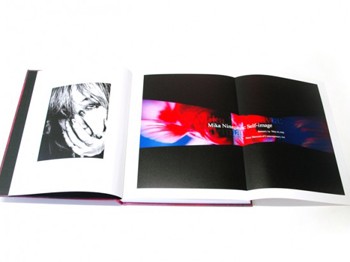
* To order a copy of the Mika Ninagawa: Self-image exhibition catalogue, please contact The Museum Shop at the Hara Museum.
Tel: 03-3445-2069/Fax: 03-3473-0104/E-mail: shop@haramuseum.or.jp
The catalogue is also available for purchase at the online museum shop.
https://www.haramuseum.or.jp/shop/showGroup.php?CatId=8
